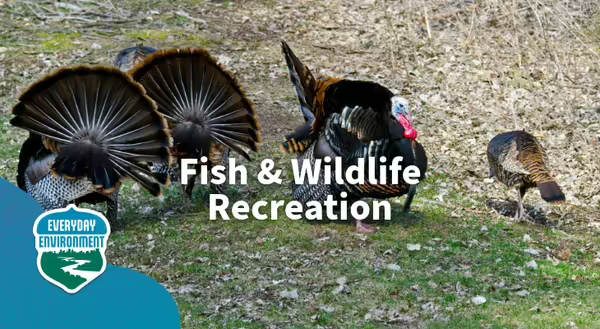
Sports enthusiasts and data lovers go hand in hand — just like hot dogs and mustard at Wrigley Field. Recently, I took a deep dive into the Illinois Department of Natural Resources database, exploring historical trends in hunting and fishing license sales, as well as harvest data, to see how things have evolved over my lifetime.
What sparked my curiosity was the way technology and regulations have transformed outdoor recreation. Today’s advancements have made it easier than ever to engage in these traditions — whether through the expansion of equipment used for white-tailed deer hunting, or fishing gear that pinpoints exactly where fish are located. Even regulations have shifted to provide greater accessibility.
Illinois Hunting and Fishing By the Numbers
In 1960, Illinois sold 496,696 hunting licenses and 845,116 fishing licenses. Since then, the state’s population has grown by 2.6 million people, yet in 2024, license sales have significantly declined — 287,438 hunting licenses and 618,921 fishing licenses were purchased. This raises interesting questions about changing lifestyles, interests, and participation in outdoor activities.
When looking at Illinois' most popular game animal, the white-tailed deer, the harvest numbers paint a stark contrast. In 1960, only 2,553 deer were harvested, but by 2024, that number had grown to 171,322. The highest recorded harvest was in 2005, before many of today’s technological advancements, with 201,209 deer taken.
Despite these changes, success rates for deer hunting have remained relatively stable — around 28% in 2010, 29% in 2020, and 30% in 2024. This suggests that while equipment and regulations have made participation more accessible, broader factors — such as conservation efforts, wildlife management, and shifting demographics — may play a bigger role in shaping long-term trends.
Impact on Conservation
One particularly important takeaway is how license sales impact conservation funding. Many wildlife and habitat programs depend on revenue from excise taxes on outdoor gear and license purchases, which are redistributed to states based on participation levels. As license sales decline, funding for these conservation efforts may face new challenges.
These shifts reflect broader changes in culture, technology, and resource management. Understanding the changes, successes, and challenges represented by these statistics can help guide future efforts to connect youth and families with nature through meaningful outdoor experiences.
Resources to learn more
- Illinois Learn to Hunt program
- Hunters Feeding Illinois program
Thank you for reading!
Everyday Environment is a series of blogs, podcasts, webinars, and videos exploring the intricate web of connections that tie us to the natural world. The fall 2025 series explores wildlife in Illinois.
Want to listen to us chat more about hunting and fishing in Illinois? Check out the podcast episode on this topic to hear more from the Everyday Environment team.
Listen to the Podcast Sign Up for Everyday Environment Newsletter